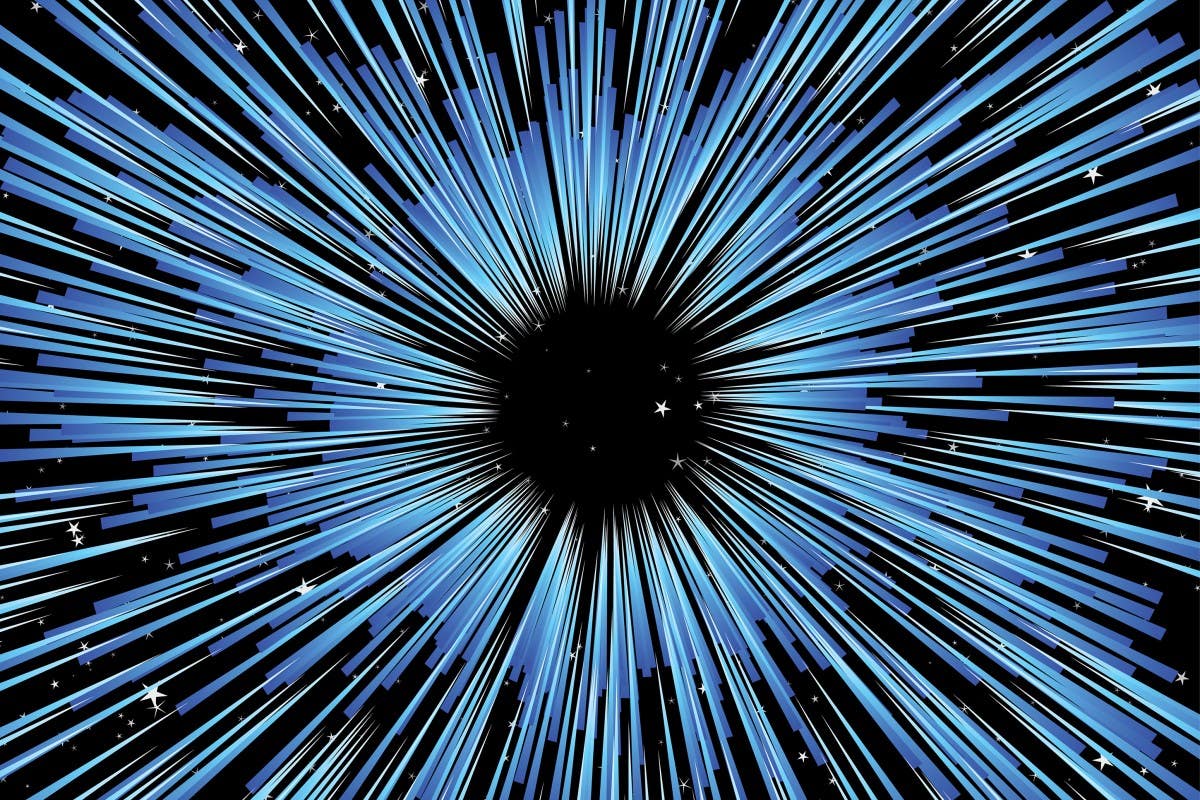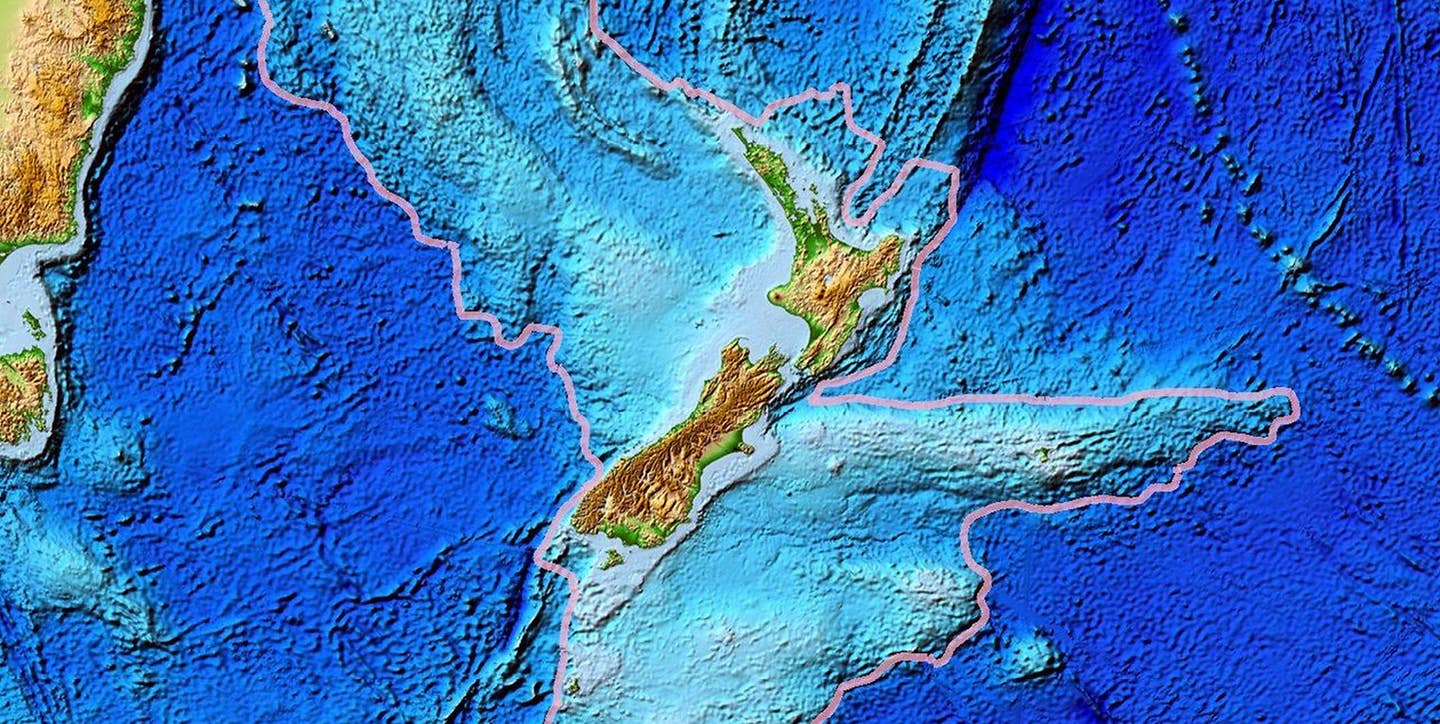Everything you wanted to know about Warp Drive including if it’s possible
The distances between t he stars are so vast that they can make your brain melt.

[June 21, 2021: Adam Frank]
The distances between the stars are so vast that they can make your brain melt. Take for example the Voyager 1 probe, which has been traveling at 35,000 miles per hour for more than 40 years and was the first human object to cross into interstellar space. That sounds wonderful except, at its current speed, it will still take another 40,000 years to cross the typical distance between stars.
Worse still, if you are thinking about interstellar travel, nature provides a hard limit on acceleration and speed. As Einstein showed, it's impossible to accelerate any massive object beyond the speed of light. Since the galaxy is more than 100,000 light-years across, if you are traveling at less than light speed, then most interstellar distances would take more than a human lifetime to cross. If the known laws of physics hold, then it seems a galaxy-spanning human civilization is impossible.
Unless of course you can build a warp drive.
Warp speed!
Ah, the warp drive, that darling of science fiction plot devices. So, what about a warp drive? Is that even a really a thing?
Let's start with the "warping" part of a warp drive. Without doubt, Albert Einstein's theory of general relativity ("GR") represents space and time as a 4-dimensional "fabric" that can be stretched and bent and folded. Gravity waves, representing ripples in the fabric of spacetime, have now been directly observed. So, yes spacetime can be warped. The warping part of a warp drive usually means distorting the shape of spacetime so that two distant locations can be brought close together — and you somehow "jump" between them.
This was a basic idea in science fiction long before Star Trek popularized the name "warp drive." But until 1994, it had remained science fiction, meaning there was no science behind it. That year, Miguel Alcubierre wrote down a solution to the basic equations of GR that represented a region that compressed spacetime ahead of it and expanded spacetime behind to create a kind of traveling warp bubble. This was really good news for warp drive fans.
The problems with a warp drive
There were some problems though. Most important was that this "Alcubierre drive" required lots of "exotic matter" or "negative energy" to work. Unfortunately, there's no such thing. These are things theorists dreamed up to stick into the GR equations in order to do cool things like make stable open wormholes or functioning warp drives.
It's also noteworthy that researchers have raised other concerns about an Alcubierre drive — like how it would violate quantum mechanics or how when you arrived at your destination it would destroy everything in front of the ship in an apocalyptic flash of radiation.
Recently, however, there seemed to be good news on the warp drive front with the publication this April of a new paper by Alexey Bobrick and Gianni Martre entitled "Introducing Physical Warp Drives." The good thing about the Bobrick and Martre paper was it was extremely clear about the meaning of a warp drive.
Understanding the equations of GR means understanding what's on either side of the equals sign. On one side, there is the shape of spacetime, and on the other, there is the configuration of matter-energy. The traditional route with these equations is to start with a configuration of matter-energy and see what shape of spacetime it produces. But you can also go the other way around and assume the shape of spacetime you want (like a warp bubble) and determine what kind of configuration of matter-energy you will need (even if that matter-energy is the dream stuff of negative energy).
What Bobrick and Martre did was step back and look at the problem more generally. They showed how all warp drives were composed of three regions: an interior spacetime called the passenger space; a shell of material, with either positive or negative energy, called the warping region; and an outside that, far enough away, looks like normal unwarped spacetime. In this way they could see exactly what was and was not possible for any kind of warp drive.
They even showed that you could use good old normal matter to create a warp drive that, while it moved slower than light speed, produced a passenger area where time flowed at a different rate than in the outside spacetime. So even though it was a sub-light speed device, it was still an actual warp drive that could use normal matter.
That was the good news.
The bad news was this clear vision also showed them a real problem with the "drive" part of the Alcubierre drive. First of all, it still needed negative energy to work, so that bummer remains. But worse, Bobrick and Martre reaffirmed a basic understanding of relativity and saw that there was no way to accelerate an Alcubierre drive past light speed. Sure, you could just assume that you started with something moving faster than light, and the Alcubierre drive with its negative energy shell would make sense. But crossing the speed of light barrier was still prohibited.
So, in the end, the Star Trek version of the warp drive is still not a thing. I know this may bum you out if you were hoping to build that version of the Enterprise sometime soon (as I was). But don't be too despondent. The Bobrick and Martre paper really did make headway. As the authors put it in the end:
"One of the main conclusions of our study is that warp drives are simpler and much less mysterious objects than the broader literature has suggested"
That really is progress.
Like these kind of feel good stories? Get the Brighter Side of News' newsletter.
Tags: #New_Discovery, #Space_Travel, #Warp_Drive, #The_Brighter_Side_of_News
Joseph Shavit
Head Science News Writer | Communicating Innovation & Discovery
Based in Los Angeles, Joseph Shavit is an accomplished science journalist, head science news writer and co-founder at The Brighter Side of News, where he translates cutting-edge discoveries into compelling stories for a broad audience. With a strong background spanning science, business, product management, media leadership, and entrepreneurship, Joseph brings a unique perspective to science communication. His expertise allows him to uncover the intersection of technological advancements and market potential, shedding light on how groundbreaking research evolves into transformative products and industries.



